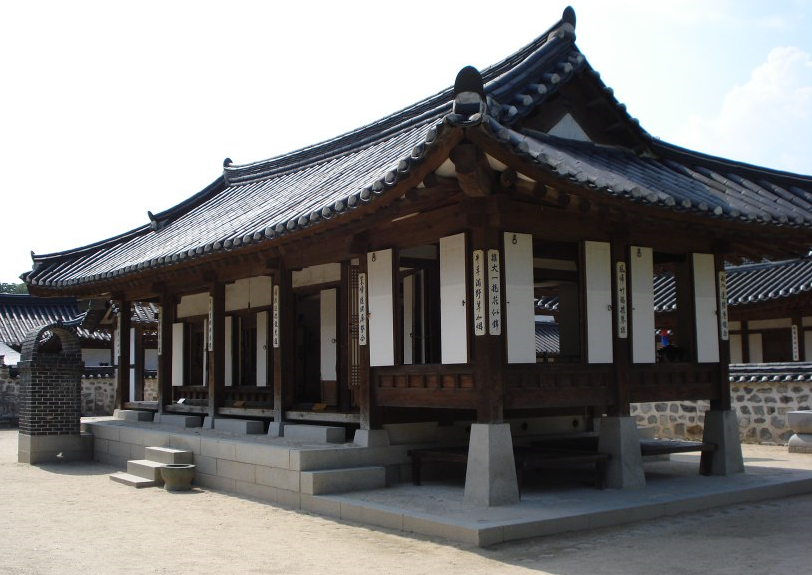Hanok
Hanok is the proud architectural style of Korea.
I will briefly introduce Hanok on this page.
*The source of this information is Wikipedia [Hanok].

Overview
A hanok (Korean: 한옥, 韓屋) is a traditional Korean house. Hanoks were first designed and built in the 14th century during the Joseon Dynasty.
Korean architecture considers the positioning of the house in relation to its surroundings, with thought given to the land and seasons. The interior of the house is also planned accordingly. This principle is called baesanimsu (Hangul: 배산임수; Hanja: 背山臨水), meaning that the ideal house is built with a mountain in the back and a river in the front. Hanok shapes differ by region. In the cold northern regions of Korea, hanoks are built in a square with a courtyard in the middle in order to retain heat better. In the south, hanoks are more open and L-shaped.
History
A hanok is a Korean house which was developed in Korean Peninsula and Manchuria.
Early Time
Paleolithic people in the Korean Peninsula stayed in caves or made temporary houses. In the Neolithic era, the temporary house developed into a dugout hut. They dug into the ground with a small shovel and built a small house which used rafters and columns. Woods was used for the rafters and columns, and straw was used for roof. In the Bronze Age, there were several columns in the house, so the area of the house was extended relative to early houses. Iron Age Hanok had Ondol (Hangul: 온돌, Hanja: 溫堗), and also used Giwa (Hangul: 기와), a kind of roofing tile which was made with fired clay. By using Giwa roof tiles, hanok developed a specific shape.
The Enlightenment
The Enlightenment saw many foreigners visit the hermit kingdom. For this reason, Protestantism was spread, but it wasn't common. Anglicanism and Catholicism were the more common branches of the Christian faith in Korea at that time. Early churches utilized the hanok style. This church is located in Ganghwa County, Jincheon County, Cheongju.
South Korea
After the devastation of the Korean War there was a need for cheap, suitable housing for people displaced by the war. During the period immediately after the war several hanoks of historical value were demolished. In the larger cities of South Korea, only small clusters of hanoks remain. However the value of hanoks has been discussed in the early twentieth century, with many comparing them favourably to the more common but less eco-friendly apartments found across South Korea. Today, some train stations are influenced by traditional hanok design. (Jeonju station for example)





